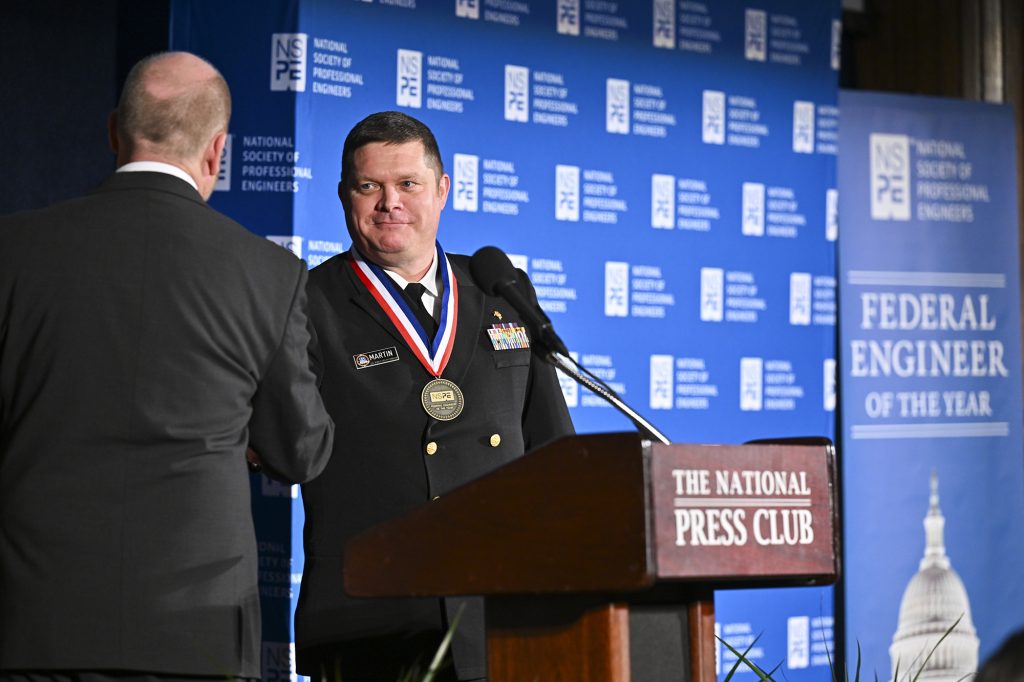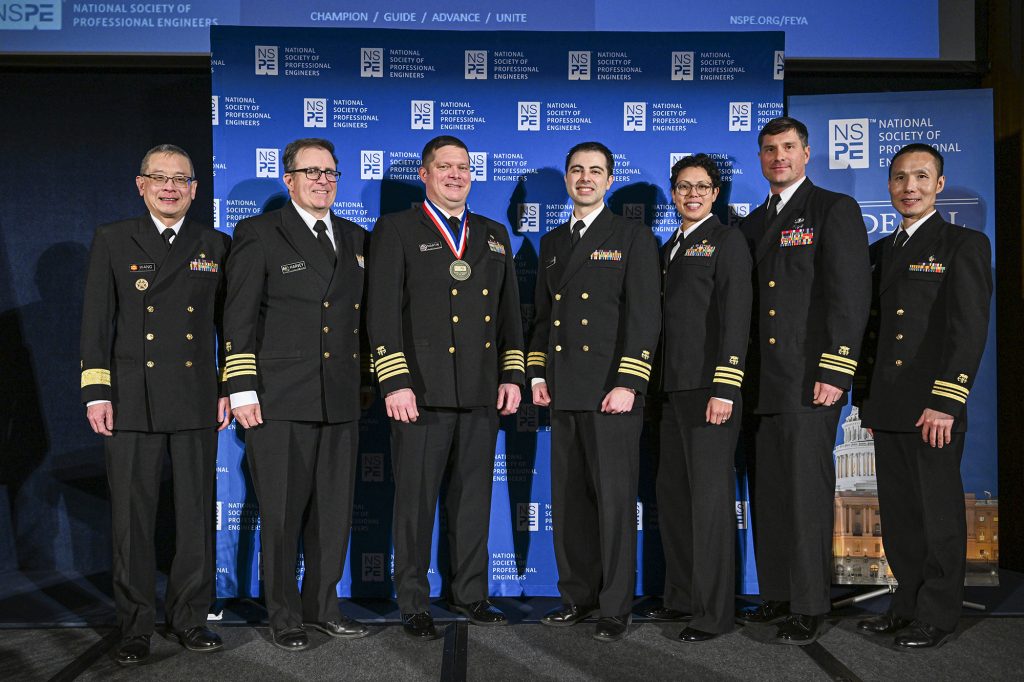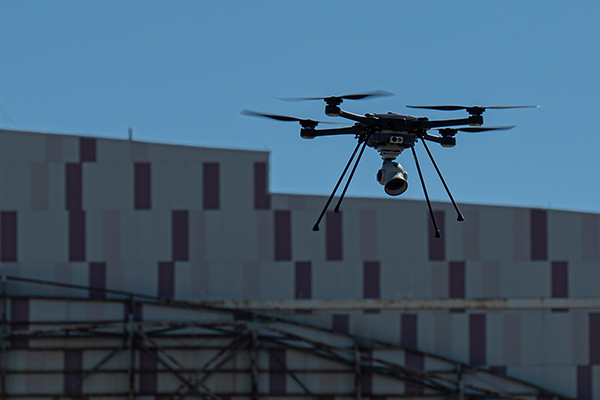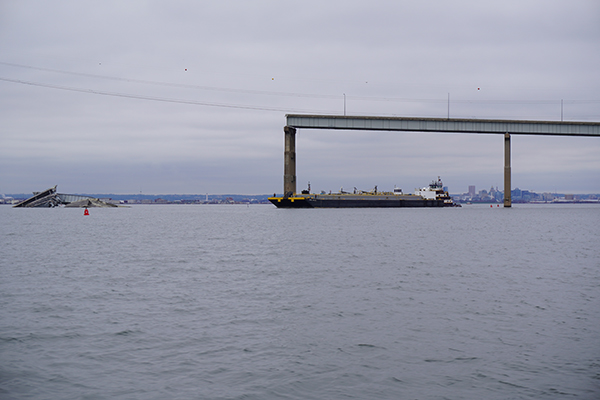By Rear Adm. Emil Wang, JD, M.SAME, USPHS
Across the globe, engineer officers with the U.S. Public Health Service are making contributions in the fields of biological incident response, pharmaceutical modeling, disaster response, water and sanitation infrastructure, and ventilation and indoor environmental quality.

Martin and his team guided decision-makers in Operation Warp Speed to provide safe ventilation to federal and state entities, private employers, unions, and employees, as well as border security, law enforcement operations, embassies, military bases, and other military missions.
The U.S. Public Health Service is the nation’s preeminent public health uniformed service whose mission is to protect, promote, and advance the health and safety of the nation. Among 11 professional categories of the Commissioned Corps, engineer officers are an integral and valued asset serving in agencies across the federal government, often in vulnerable and underserved communities and in isolated, hard-to-fill, and hazardous assignments. These include Indian reservations and remote Alaskan villages.
Public Health Service engineer officers provide unique capabilities to solve current and emergent public health needs. Engineers are, by nature, mission-focused professionals who frequently perform their jobs without any expectation for recognition or gain. Their hard work, ingenuity, selflessness, and perseverance are oftentimes left untold. By sharing their stories, however, we can highlight the vast breadth of distinguished service that they and their fellow engineering professionals impart for the nation.
Distinguished Service
Improving the Government’s Ability to Respond to Biological Incidents. Cdr. Samantha Spindel, Ph.D., USPHS, is an engineer officer serving as the Acting Chief of Staff in the Office of Preparedness at the Administration for Strategic Preparedness & Response within the Department of Health and Human Services. In her role, she serves as the lead for the data platforms, standards, and integration priority area of the National Biodefense Strategy Early Warning Joint Capabilities Plan.
Spindel oversees cross-functional teams that establish concrete mechanisms by which the U.S. government could improve its capabilities to detect, notify authorities, and respond to a biological incident. She also implemented organizational changes within the Office of Preparedness that led to enhanced efficiency and effectiveness in carrying out its operations as well as cultivating a sustainable culture.
Pioneering Work in Advanced Modeling and Simulation Techniques. Lt. Cdr. Geng Tian, Ph.D., USPHS, works as a Lab Chief at the Center for Drug Evaluation & Research, Office of Pharmaceutical Quality. In his role, Tian pioneers progress in advanced modeling and simulation techniques. This work has enhanced production efficiency and generated substantial cost savings in pharmaceutical processes, which directly benefits patients.
Tian, along with other engineers at the Food & Drug Administration, have published articles introducing a groundbreaking modeling framework for in-process control; this has resulted in a significant leap in improving the quality of pharmaceutical manufacturing. He and his team have also made contributions in advancing the use of modeling and simulation for quality risk management.
Providing Power and Responding to National Disasters. Lt. Cdr. Matthew Haith, USPHS (Top 10 Finalist), is an engineer officer detailed to the U.S. Army Corps of Engineers, where he has served as a project manager and team lead for the Army’s response to national incidents such as the Red Hill fuel leak in Hawaii. He managed the design and implementation of the water treatment facility that safeguarded the water supply for nearly 1,700 military families affected by the incident.
Haith also served on temporary power response teams mitigating incidents such as the Maui wildfires, the nation’s deadliest wildfire in over a century. In this role, he coordinated with state, county, and federal agencies, as well as contractors, to provide 1,089-kW of power across 20 key infrastructure assets, greatly streamlining response and recovery efforts.

Overseeing Area-Wide Programs and Advancing Projects to Benefit the Underserved. Cdr. Christopher Fehrman, P.E., USPHS (Top 10 Finalist), is the Alaska Area Director for the Indian Health Service, Division of Sanitation Facilities Construction. This agency is responsible for improving the environmental and public health conditions for American Indians and Alaska Natives through close collaboration with tribes to provide and maintain access to safe drinking water and waste disposal infrastructure. In his role, Fehrman oversees a $1.4 billion program for planning, design, and construction of water, wastewater, and solid waste facilities to eliminate health disparities for more than 180,000 Alaska Native people in 228 tribes and one reservation. His program strategically utilizes funds from the Infrastructure Investment & Jobs Act to advance projects to provide “First Service” water and sewer services to over 1,157 homes.
Fehrman is instrumental in leveraging combined resources through strong partnerships with other federal and state agencies in a “whole-of government” approach to ensure project success.
Protecting Worker Health and Safety From COVID-19. Capt. Stephen Martin Jr., Ph.D., USPHS (Federal Engineer of the Year), has performed exceptional engineering work to protect the health and safety of workers for over 23 years at the Centers for Disease Control & Prevention (CDC), National Institute for Occupational Safety and Health. He is a renowned expert in ventilation, engineering controls, ultraviolet germicidal irradiation, airborne infectious disease transmission, and indoor environmental quality. His work on the CDC ventilation guidance that provided expertise tailored to improvements in indoor air ventilation to protect individuals from exposure to infectious respiratory pathogens has contributed to the safety of millions globally throughout the COVID-19 pandemic.
Martin and his team guided decision-makers in Operation Warp Speed to provide safe ventilation to federal and state entities, private employers, unions, and employees, as well as border security, law enforcement operations, embassies, military bases, and other military missions. The team developed the critical CDC COVID-19 Ventilation webpage, which has received over 650,000 views and has shared its expertise in over 25 presentations and 1,000 informal consultations, and reviewed more than 50 federal documents for technical content. Martin also supported leadership in the White House, CDC, and congressional committees regarding protective engineering controls within healthcare, businesses, commercial aircraft, and school environments.
His contributions extend to innovative, cost-effective solutions to complex problems that could be implemented by the public, including the use of enclosures and ventilation to provide isolation to people and spaces. In 2023, his team led the Air Cleaning Working Group in the development of ASHRAE Standard 241: Control of Infectious Aerosols, published the same year. This groundbreaking, consensus-based, enforceable standard will reduce indoor exposure to viruses and other pathogens that cause personal and economic damage. The group also led the CDC’s May 2023 updated ventilation guidance to prevent the continued spread of COVID-19 and prepare buildings for future disease spread through infectious aerosols.
Providing Solutions
Public Health Service engineer officers continue to demonstrate their versatile capabilities. Their stories show the unique abilities of engineering professionals to provide transferable solutions to public health needs, both foreign and domestic.
Our engineers are a critical asset called to address pressing response and deployment challenges—exhibiting a commitment “to protect, promote, and advance the nation’s health and safety.”
Recognizing Excellence
This is a momentous year to share the stories of our incredible Public Health Service engineer officers who have done outstanding work in the agencies they are assigned to. A group of five engineer officers were recognized in the Federal Engineer of the Year Awards Program of the National Society of Professional Engineers (NSPE)—with three being ranked in the Top Ten of all awardees within the federal service. Most rewardingly, Capt. Stephen Martin Jr., Ph.D., USPHS, was selected as the 2024 Federal Engineer of the Year for his work in developing ASHRAE Standard 241: Control of Infectious Aerosols.
NSPE’s mission is to champion the engineering profession and “foster licensed professional engineers in service to society.” The organization was founded in 1934 and represents the voices and interests of licensed professional engineers across the United States and its territories. Today, NSPE is comprised of over 500 local chapters. Its mission and purpose coincides with the values of the Commissioned Corps.
The Federal Engineer of the Year Awards Program has recognized exceptional engineers employed within the federal service for 45 years. All agencies employing at least 50 engineers worldwide are eligible to compete for this prestigious recognition. Out of the nearly 100,000 engineers who work within the federal system, typically only 25 are nominated each year.
Rear Adm. Emil Wang, JD, M.SAME, USPHS, is Assistant Surgeon General and Engineer Chief Professional Officer, U.S. Public Health Service.
More News from TME
-

Building a Common Operating Picture of Facilities, Infrastructure, and Terrain
With an increasing need for commanders to have an understanding of infrastructure and the physical environment both on and off the battlefield, geospatial engineers must be able to provide a global, holistic, and cohesive view through tools like the Joint Engineer Common Operating Picture. -

Meeting Data-Intensive Challenges With Narrow AI
When considering solutions for targeted, data-intensive problems, such as a recent challenge undertaken by the Air Force Civil Engineer Center to predict construction project priorities, the use of traditional narrow artificial intelligence still beats emerging technologies. -

Leveraging Geospatial Data Tools on the Key Bridge Response
In carrying out the joint response after the Key Bridge collapse, the U.S. Coast Guard and other partner agencies leveraged both internal and external geographic information system expertise to provide data-sharing and near real-time monitoring capabilities.